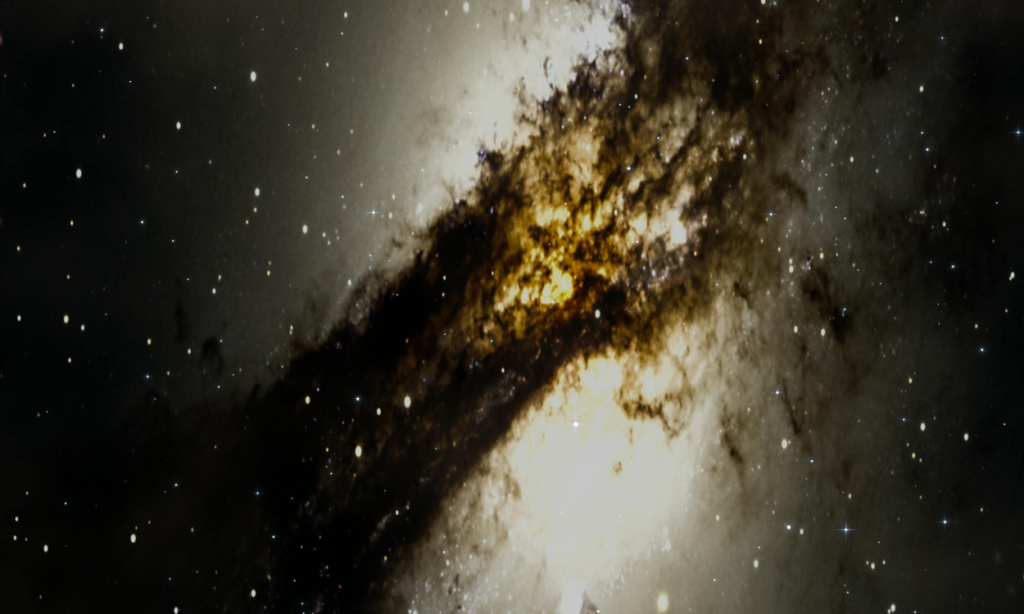The question, “How Big is the Universe? Exploring the Infinite Cosmos,” has fascinated scientists, philosophers, and dreamers for centuries. The universe, a vast expanse of matter, energy, and mystery, stretches beyond the limits of human imagination. From the twinkling stars visible in the night sky to galaxies billions of light-years away, understanding how big the universe is reveals not only our physical reality but also our place within it. This exploration takes us through the known and the unknown—an odyssey across space and time itself.
Table of Contents

The Beginning of Everything
To understand How Big is the Universe? Exploring the Infinite Cosmos, we must start from the beginning—the Big Bang. Roughly 13.8 billion years ago, all matter and energy in the universe were compressed into a single, incredibly hot and dense point. In a fraction of a second, this singularity expanded explosively, giving birth to space, time, and everything we know today. The Big Bang didn’t happen in space—it created space itself. This means the universe has no “center” in the traditional sense; it’s expanding everywhere at once.
As the universe expanded, galaxies, stars, and planets began to form. Over billions of years, the cosmos evolved into the vast, complex system we now study. When asking How Big is the Universe? Exploring the Infinite Cosmos, we must consider not only the size of what we can see but also what lies beyond our observational reach.
The Observable Universe
The part of the universe that we can currently observe is known as the observable universe. Due to the finite speed of light, we can only see as far as light has traveled since the Big Bang—about 13.8 billion years. However, because the universe has been expanding all this time, the current distance to the edge of the observable universe is about 46.5 billion light-years in every direction. This means the observable universe has a diameter of approximately 93 billion light-years.
Yet, when we ask How Big is the Universe? Exploring the Infinite Cosmos, the observable universe is just the beginning. It represents only the portion we can detect—there could be far more beyond, hidden by the limits of light and time. The universe might extend infinitely in all directions, or it might curve back on itself, forming a cosmic loop. We simply don’t know.
Beyond What We Can See
The most intriguing part of How Big is the Universe? Exploring the Infinite Cosmos is what lies beyond our cosmic horizon. Space may continue infinitely, or it might have an edge—though not in the way we imagine. In cosmology, the concept of an “edge” doesn’t mean a wall or boundary, but rather a limit to what can be observed or measured.
Scientists use the cosmic microwave background (CMB)—the faint afterglow of the Big Bang—to study the shape and extent of the universe. Data from satellites like WMAP and Planck suggest that the universe is flat on large scales, meaning it likely extends infinitely. However, there’s also a chance that it could be closed or curved, looping back on itself like the surface of a sphere.
If the universe is infinite, then there could be infinite galaxies, infinite stars, and perhaps infinite versions of ourselves scattered across space. The scale of this idea challenges the limits of human comprehension and reshapes how we think about existence itself.
Galaxies, Stars, and Cosmic Structures
When pondering How Big is the Universe? Exploring the Infinite Cosmos, one must consider the breathtaking number of celestial bodies it contains. Astronomers estimate there are over 200 billion galaxies in the observable universe, each holding billions—or even trillions—of stars. Our own Milky Way Galaxy, for instance, is about 100,000 light-years wide and contains more than 100 billion stars.
But galaxies don’t exist in isolation. They form clusters, superclusters, and even larger structures known as the cosmic web—a vast network of filaments made of galaxies and dark matter, stretching across hundreds of millions of light-years. These immense formations reveal that the universe’s architecture is both chaotic and orderly, shaped by gravity and dark energy.
Dark Matter and Dark Energy
To fully explore How Big is the Universe? Exploring the Infinite Cosmos, we must address the mysterious components that make up most of it—dark matter and dark energy. Ordinary matter, which includes everything we can see—stars, planets, dust, and gas—accounts for only about 5% of the universe. The rest is made up of 27% dark matter and 68% dark energy.
Dark matter doesn’t emit or absorb light, making it invisible to telescopes. However, its gravitational pull affects the motion of galaxies, hinting at its presence. Dark energy, on the other hand, is even more mysterious. It’s believed to be the force driving the universe’s accelerating expansion.
This accelerating expansion means the universe is not only vast but also growing larger every second. Galaxies are moving away from each other at increasing speeds, ensuring that the cosmos we see today will look very different billions of years from now. The question “How Big is the Universe? Exploring the Infinite Cosmos” becomes even more complex because its size keeps changing.
The Expanding Universe
In 1929, astronomer Edwin Hubble discovered that galaxies are receding from us, leading to the conclusion that the universe is expanding. The farther away a galaxy is, the faster it moves—a relationship known as Hubble’s Law. Modern observations confirm that this expansion is accelerating, propelled by dark energy.
This expansion implies that the universe has no fixed size. Its boundaries are constantly stretching, making How Big is the Universe? Exploring the Infinite Cosmos a question without a static answer. Every passing second increases the cosmic distance between galaxies, stars, and even atoms on the grandest scales imaginable.
The Multiverse Hypothesis
An exciting twist in How Big is the Universe? Exploring the Infinite Cosmos comes from the multiverse theory. Some scientists propose that our universe might be just one of many—an infinite collection of universes existing within a greater “multiverse.” Each of these universes could have different laws of physics, dimensions, and outcomes.
If true, this would mean our universe, vast as it is, could be just a single bubble in an infinite cosmic ocean. While the multiverse remains speculative, it pushes the boundaries of what we mean when we ask, How Big is the Universe? Exploring the Infinite Cosmos.
Our Place in the Immensity
As we continue to explore How Big is the Universe? Exploring the Infinite Cosmos, we realize how small and precious our world truly is. Earth orbits an ordinary star in an average galaxy, one among trillions. Yet within this cosmic immensity, life has emerged—a rare and extraordinary occurrence.
The realization of our tiny place in the universe can be both humbling and inspiring. It reminds us of the fragility of life and the importance of curiosity, exploration, and preservation of our planet. Each discovery we make about the cosmos deepens our understanding not only of the stars but also of ourselves.
Conclusion
How Big is the Universe? Exploring the Infinite Cosmos remains one of humanity’s greatest questions—one that science continues to unravel but may never fully answer. From the fiery birth of the Big Bang to the endless expansion driven by dark energy, the universe defies simple explanation. It stretches beyond the limits of sight, thought, and imagination.
Whether finite or infinite, the universe stands as a magnificent testament to the power and mystery of creation. In asking How Big is the Universe? Exploring the Infinite Cosmos, we are really asking about the limits of knowledge, the essence of existence, and the wonder of being a small part of something immeasurably grand.





